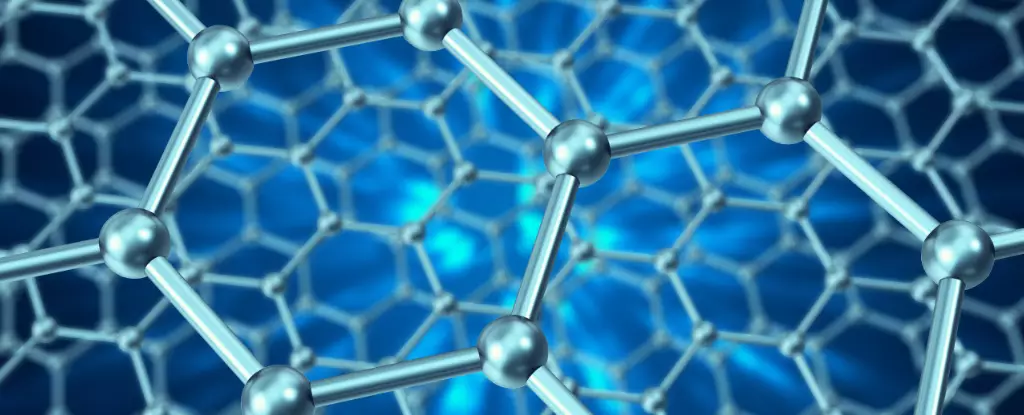Graphene, a remarkable material composed of a single layer of carbon atoms arranged in a honeycomb lattice, has emerged as a focal point of advanced materials science. Its extraordinary electronic properties make it a promising candidate for a multitude of applications, from flexible electronics to energy storage solutions. Researchers are particularly intrigued by the behavior of electrons within graphene, which can exhibit unconventional dynamics under certain conditions. Recent investigations involving twisted layers of graphene have unveiled a novel state of matter that could revolutionize our understanding of quantum mechanics and inform future technological developments.
At the heart of the exploration of graphene’s potential are the electrons that navigate its intricate atomic structure. When electrons move through graphene, their behavior is influenced by the arrangement of carbon atoms which provides a unique environment for electrical conduction. What has piqued the interest of physicists is the ability to manipulate the fundamental properties of these electrons by altering the physical structure of graphene. Specifically, when stacks of graphene layers are twisted at precise angles, researchers have observed distinctive electronic phenomena that deviate from traditional expectations.
In recent experiments, scientists have successfully forced electrons in twisted graphene structures into a state known as a Wigner crystal. This phase transforms the electrons from a fluid-like state into a more solid arrangement, characterized by specific geometric patterns. While the concept of a Wigner crystal is not new, the peculiar twists introduced by the twisted layers of graphene have resulted in unexpected behaviors. The distortion alters the topology of the electron landscape, leading to novel effects that have not been observed in earlier studies of Wigner crystals.
The complexity introduced by the moiré pattern—an optical interference pattern generated when two regular grids overlap—plays a crucial role in this transformation. The interaction between twisted graphene layers creates a dramatic alteration in the electron dynamics, engendering conditions where electrons not only arrange themselves into ordered structures but also maintain conductivity along the material’s edges, a behavior previously deemed paradoxical.
Implications for Quantum Computing
The groundbreaking findings regarding the state of matter in twisted graphene hold significant implications for the future of quantum computing. The unique electron behavior observed may offer pathways to develop qubits—fundamental units of information in quantum systems—that are more stable and reliable than conventional qubits, which are typically based on individual particles. The ability to exploit the properties of these topological electronic crystals could lead to robust systems that resist the disruptive influences that often plague quantum devices.
Furthermore, embedding graphene in complex geometries, similar to a Möbius strip, could yield a new array of quasiparticles. These quasiparticles would potentially embody exotic physics, unlocking further understanding in quantum mechanics and material science. As researchers continue to delve into these phenomena, the combination of twisted graphene and quantum phenomena could catalyze significant advancements across various fields of technology and science.
Concluding Thoughts
The exploration of twisted graphene layers has opened up an exciting new chapter in condensed matter physics. With findings that challenge traditional understandings of electron dynamics and material properties, researchers are venturing into uncharted territory filled with potential. The discovery of this new state of matter not only offers deeper insights into the fundamental workings of quantum mechanics but also sets the stage for the next generation of quantum computing technologies. As science progresses, the implications of these discoveries could reshape the digital landscape, signaling a future where materials like graphene play a pivotal role in advancing computation and beyond.


Leave a Reply